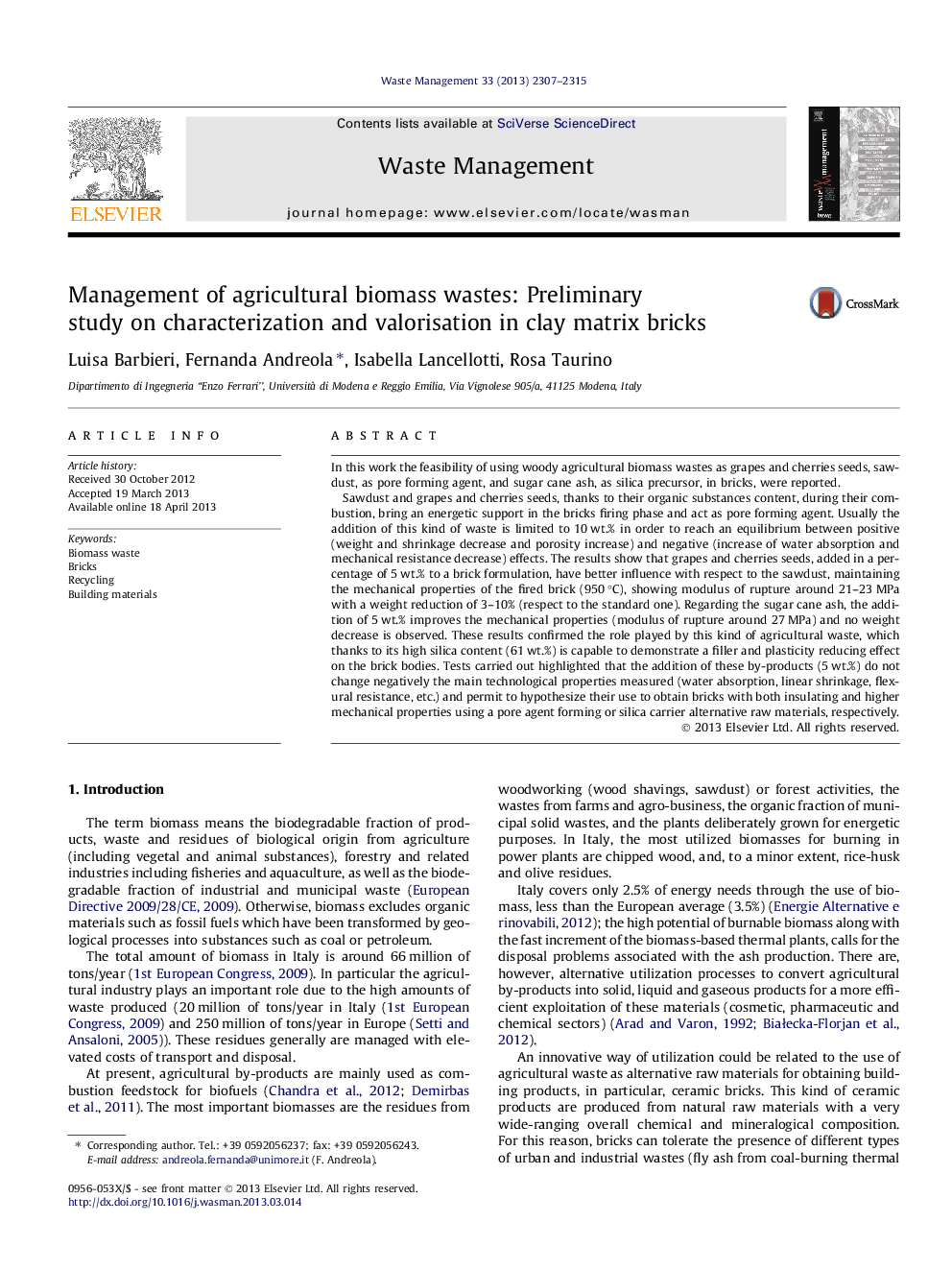| کد مقاله | کد نشریه | سال انتشار | مقاله انگلیسی | نسخه تمام متن |
|---|---|---|---|---|
| 4471713 | 1315039 | 2013 | 9 صفحه PDF | دانلود رایگان |

• Agricultural industry produces high amounts of waste with elevated costs of transport and disposal.
• Chemical-physical biomass characterization and different management ways have been evaluated.
• Biomass as pore forming agent and as silica precursor are used in the clay bricks body.
• Porous bricks or bricks with good mechanical properties are obtained using biomass wastes.
In this work the feasibility of using woody agricultural biomass wastes as grapes and cherries seeds, sawdust, as pore forming agent, and sugar cane ash, as silica precursor, in bricks, were reported.Sawdust and grapes and cherries seeds, thanks to their organic substances content, during their combustion, bring an energetic support in the bricks firing phase and act as pore forming agent. Usually the addition of this kind of waste is limited to 10 wt.% in order to reach an equilibrium between positive (weight and shrinkage decrease and porosity increase) and negative (increase of water absorption and mechanical resistance decrease) effects. The results show that grapes and cherries seeds, added in a percentage of 5 wt.% to a brick formulation, have better influence with respect to the sawdust, maintaining the mechanical properties of the fired brick (950 °C), showing modulus of rupture around 21–23 MPa with a weight reduction of 3–10% (respect to the standard one). Regarding the sugar cane ash, the addition of 5 wt.% improves the mechanical properties (modulus of rupture around 27 MPa) and no weight decrease is observed. These results confirmed the role played by this kind of agricultural waste, which thanks to its high silica content (61 wt.%) is capable to demonstrate a filler and plasticity reducing effect on the brick bodies. Tests carried out highlighted that the addition of these by-products (5 wt.%) do not change negatively the main technological properties measured (water absorption, linear shrinkage, flexural resistance, etc.) and permit to hypothesize their use to obtain bricks with both insulating and higher mechanical properties using a pore agent forming or silica carrier alternative raw materials, respectively.
Figure optionsDownload as PowerPoint slide
Journal: Waste Management - Volume 33, Issue 11, November 2013, Pages 2307–2315